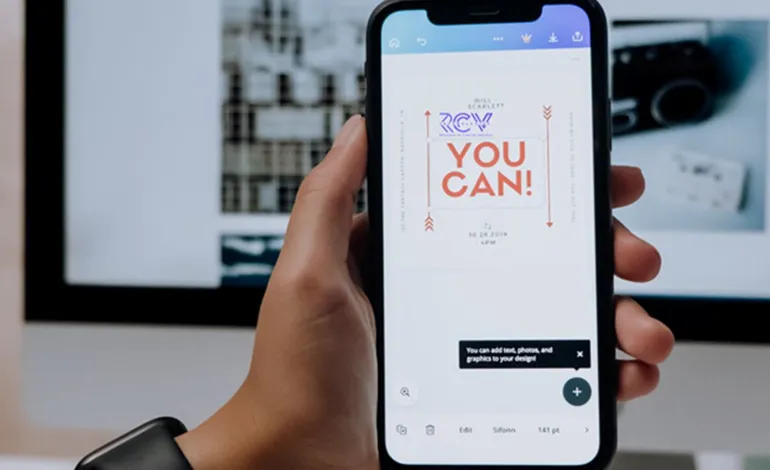Server-Side Rendering Vs Client-Side Rendering: Professional Insights From RCV Technologies

you’ve invested in a beautiful, feature-packed website, but your users complain it’s slow to load or clunky on mobile. Or worse – your search rankings have dipped because your pages aren’t being crawled effectively by search engines. These are common problems that often trace back to one critical choice during development: Server-Side Rendering vs. Client-Side Rendering.
As a professional web design company in India, RCV Technologies partners with businesses every day to make these decisions strategically – not just technically. We know that rendering methods don’t just affect code; they influence how customers experience your brand, how search engines see your site, and ultimately how much revenue your website can generate.
In this blog, we’ll walk you through the essentials of SSR and CSR, explain the key differences in plain language as a professional web design company in India, and show how our team helps clients make informed choices that balance performance, SEO, and long-term scalability.
Understanding Server-Side Rendering (SSR)
With Server-Side Rendering, the server processes a request, builds the HTML for the page, and sends it fully rendered to the user’s browser. This means:
- Faster Initial Load:
Users see a complete page almost immediately, which improves perceived performance.
- SEO Advantages:
Search engines receive a fully rendered page, making it easier to index content accurately and rank higher.
- Consistency:
All users see the same initial state, regardless of their device performance or browser capabilities.
This approach is ideal for:
- Content-Rich Websites:
Blogs, news portals, and e-commerce stores with heavy emphasis on organic traffic.
- Public-Facing Marketing Sites:
Landing pages or corporate websites where first impressions and SEO are critical.
Technologies often used: Next.js (React), Nuxt.js (Vue), Angular Universal.
Understanding Client-Side Rendering (CSR)
With Client-Side Rendering, the server sends a lightweight HTML shell with JavaScript files to the browser, and the browser constructs the page on the user’s device. This offers:
- Dynamic Interactions:
Perfect for web apps requiring frequent, complex interactions like dashboards or SaaS products.
- Faster In-App Navigation:
Once loaded, transitions between pages feel instant because the browser doesn’t need a full page reload.
- Reduced Server Load:
Some rendering responsibility shifts to the user’s device, potentially lowering server costs.
This approach is ideal for:
- Highly Interactive Applications:
Social platforms, productivity tools, or online editors.
- Single Page Applications (SPAs):
Where users expect an app-like feel with minimal reloads.
Technologies often used: React, Angular, Vue with SPA configurations.
Rise of Hybrid and “Best of Both Worlds” Solutions
With modern frameworks, it’s possible to take advantage of both SSR and CSR techniques to get the best of both. Examples include:
- Static Site Generation (SSG) to pre-render content-heavy pages.
- Client-Side Hydration for some interactive elements after an initial page load.
- Rendering at the edge, so content can be served closer to the user when speed is essential.
As a professional web design agency based in India, we are able to take advantage of hybrid rendering systems to help clients achieve their goals without having to choose between speed and interactivity, or efficiency and SEO.
How We Evaluate the Right Approach for Clients
At RCV Technologies, we never apply a one-size-fits-all model. Instead, we evaluate key business and technical factors before recommending SSR, CSR, or a hybrid strategy. Our process includes:
- Business Goals & Audience:
- If the goal is high search visibility and quick first impressions, SSR is often preferable.
- If the goal is building a feature-rich, app-like experience, CSR or a hybrid model may be better.
- Performance Benchmarks:
- We analyze expected traffic, device types, and geographic locations to ensure the rendering approach works well under real-world conditions.
- SEO Strategy:
- For e-commerce and content-heavy sites, SSR improves crawlability.
- For private dashboards or apps behind logins, CSR’s SEO limitations are irrelevant.
- Cost & Scalability:
- SSR requires more server resources; CSR shifts workload to client devices but can complicate SEO.
- We build scalable architectures that balance these trade-offs.
- Technology Stack Alignment:
- We choose frameworks (like Next.js or Nuxt.js) that support both SSR and CSR so clients can evolve as their needs change.
What Clients Can Expect When Working with Us:
- Transparent Recommendations:
We will clearly describe the advantages and disadvantages of every rendering model we recommend, in non-technical terms.
- Prototypes & Testing:
We will show clients in advance of build what benefits they will realize with different approaches to rendering (SSR vs CSR, for example)
- Future-Proofing:
We will build architectures with the ability to shift between SSR and CSR based on their future business needs to assess if an SSR or a CSR was truly the best choice.
- End-to-End Expertise:
In addition to creating the UI/UX design and graphic assets, we will work with the client to ensure the rendering approach can integrate with existing systems and optimize at the back end.
Conclusion
Choosing between Server-Side Rendering and Client-Side Rendering isn’t just a technical decision – it’s a business decision that affects performance, SEO, and user satisfaction. As a professional web design company in India, our role in affordable e-commerce development is to simplify that complexity for you. By analyzing your goals, user behavior, and technology stack, we ensure your website or web application delivers the speed, visibility, and experience your audience expects – today and into the future.






